It looks like you're using an Ad Blocker.
Please white-list or disable AboveTopSecret.com in your ad-blocking tool.
Thank you.
Some features of ATS will be disabled while you continue to use an ad-blocker.
share:
What do you mean by "The animals are spread out widely dispersed in all four and a half years (Earth Years) away from the rover/camera on a mast."?
In what does the four and a half years change the way a hypothetical animal would appear on a photo taken by the rovers? ////// I'm saying that
the masking is deliberate.The animals move both close-up as in climbing on the rovers,and as far away as the horizon,and anywhere in between for,what
1700 days? When I said I designed the rovers from initial stages and described the overlapping plates of glass,that was an attempt to tell people
that the digital stacking just re-inforces whatever is still by overlaps,and the blurry moving stuff can be easily edited out.When I conceived of the
process 1987 I had no idea that Nasa was absolutely covering up life on Mars,but I suspected they couldn't be trusted because they were government
and hushed about aliens and UFO's and connected to military war mongers thru big aeronautics contractors.Therefo I requested that ESA be given
certain prjects with ground penetrating radar,so they could independently find water for certain underground(where the life is).By Euro's being
somewhat more independent they could release their findings un-effected by military interference,I reasoned.But it's not the case and they are shut
up too or they get cut off/cut out of the big rewards later.Their arms are twisted and hands tied. My recourse is to do what I always
do.If you want something done right.........DIY.(do it yourself) This lady(friend since 1995) does her own music. In some ways we are very
similar,though not on the surface. She is determined and strong willed.
 i162.photobucket.com... www.myspace.com...
i162.photobucket.com... www.myspace.com...

reply to post by vze2xjjk
Although I don't agree that there are animals visible on the photos, I think I understand what you mean.
Although I don't agree that there are animals visible on the photos, I think I understand what you mean.
Here is yet another "impossible" Mars image where a suposed sat pic gets meshed with a rover pic and the result is an overlap that makes little
sense and becomes a mish-mash of faces from the ground level and a 100 square mile(my estimate) swath of Mars real estate from the sky. In other
words,a face of a baby/child get's blown up to appear tens of miles square because the pics have overlapping data and get simultaneously transmitted.
It would be impossible for any Mars sat to capture a 1 square foot or less baby face.No problem for a rover. Baby Face on Mars(male)
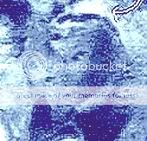
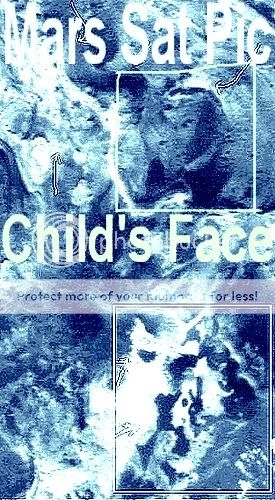
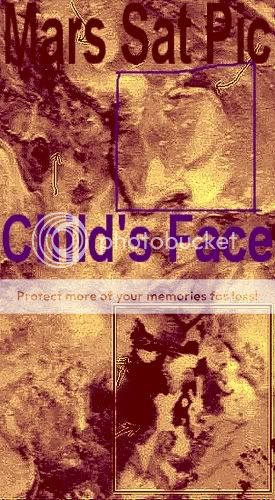
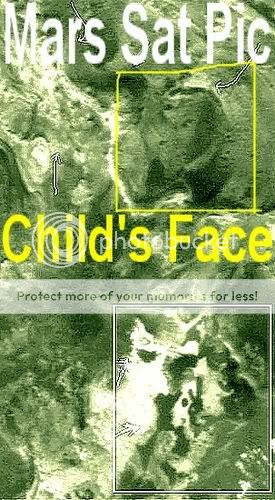 Some faces are below the word "Child",but this is by far the
most rare and interesting. Special Guest,Baby Face.
Some faces are below the word "Child",but this is by far the
most rare and interesting. Special Guest,Baby Face.




Wiolawa sent me a pic years ago(2004) from a rover shot that depicts one of the snake body creatures with somewhat humanoid facial features.Note the
comparison between a Child Baby Face in previous post,and this smaller head on a snake body.
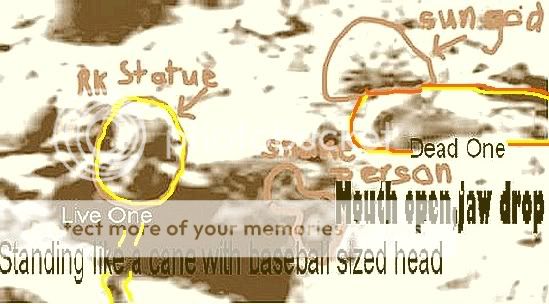 There are major differences ,yes,but we don't have anything but a
chimp on Earth that's an animal so close to looking humanoid.
There are major differences ,yes,but we don't have anything but a
chimp on Earth that's an animal so close to looking humanoid.

reply to post by vze2xjjk
The fact that you see faces everywhere (including the lawn on your photo) does not mean that NASA overlaps images when they send them to Earth.
That idea of overlapping photos, in practise, is worthless, nobody in his right mind would use that idea on a communication medium that has so much probability of failure, they would loose the data for two photos if anything went wrong with the transmission, it is better to transmit in two different occasions.
The fact that you see faces everywhere (including the lawn on your photo) does not mean that NASA overlaps images when they send them to Earth.
That idea of overlapping photos, in practise, is worthless, nobody in his right mind would use that idea on a communication medium that has so much probability of failure, they would loose the data for two photos if anything went wrong with the transmission, it is better to transmit in two different occasions.
Armap think about the limited window of opportunity of transmission to an orbiter.That's why the system I described is used.It's an imperfect system
that works.Sure there are gross errors in transmission.It's an acceptable risk for acceptable losses in usable data.Few people like me pick out the
problem of overlap or understand it.Instead they will go on seeing transposed patterns as CITIES,never knowing that the actual rectangular patterns
they see so full of 90 degree angles are about a few feet or tens of feet wide,but overlapping a sat photo,so they(patterns) appear miles wide.The
people who see cities may be right,or they may be mislead by the double images. I can't burst their bubble,can I? They only
know half the story.I'm trying to show them the other half. 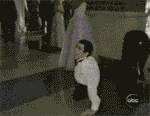

I can see how people would think a rock is a skull but its almost risen tot he point of hallucinations like schizophrenia it seems. Ya know there is
a reason people see faces in clouds and never see clouds in faces.
reply to post by vze2xjjk
I have thought about it and I will try to explain why your idea is not the best and would not work as you think.
Suppose you have two images to send, image1 and image2.
Image1
Image2
Each image has only two colours. I have put the numbers in different places to make it easier to see what would happen if the images were overlapped.
Now, if you overlap the images you will get something like this.
As you can see, there is no way of knowing which image had the "1" and which image had the "2", the only way is to make some change in the image that is the result of the overlapping.
As this was an oversimplified case, imagine that the images are these two.
Image1b
Image2b
In this case, if we overlap the images we must provide a way of retrieving the original images, we must use a more complex algorithm to mix the images than the previous one, if we just add the two values for each colour we do not have a way of knowing what values gave that result, for example, 4 could be 3+1 or 1+3.
The best way of doing it is to have a palette with different colours attributed to different images.
That would be something like this, where the top row shows the original colours of Image 1, the left column the original colours of Image 2 and the grid the result of all possible combinations of both images. In this simplified case, two colours are common, so the last combination never happens.
Using this palette, the resulting image, the one that would be transmitted, would look like this.
So, to use the palette, we would need four(*) colours to transmit the two overlapping images, so we are doubling the size of the data, meaning that the "window of opportunity" must have twice the size of the one needed to transmit just one image.
No gain there.
Now imagine that there is failure on the transmission, because of some reason, during the transmission, some information was lost and the image received looks like this.
It would be impossible to know what was on both images, while if the images were transmitted sequentially, only if the loss of information had affected the end of the first image and the beginning of the second there would have been loss of data in both images. Considering that the centre of the image is usually where the most important data is, a loss of data at the end or at the beginning would not be as bad as a data loss at the middle of the data block.
A data loss at the middle of one data block would only affect one image, the other image would be received in perfect conditions.
I hope that you (and everybody else) understands what I was trying to explain, I sometimes make my explanations more complicated than what they explain.
* In this case, as I used two colours in each image, it may look like we need to double the number of colours, but that is only in this case. If each image had 4 colours, the colours for the resulting image would fill a grid made by 4 rows and 4 columns, in a total of 16 colours; the total colours is not the sum of the possible colours in both images, its the product of the possible number of colours in both images. So, for two images with a maximum possible 256 shades of grey we would need 256*256=65536 colours. As a result, the data transmitted must be more than the double, it only looks like the double in this over simplified example.
Also, I ignored error correction data and used a possible transmission where the values for each point would be transmitted sequentially, in reality they are probably transmitted in blocks with error correction information.
Edit: Why that completely out of topic image?
[edit on 13/8/2008 by ArMaP]
I have thought about it and I will try to explain why your idea is not the best and would not work as you think.
Suppose you have two images to send, image1 and image2.
Image1
Image2
Each image has only two colours. I have put the numbers in different places to make it easier to see what would happen if the images were overlapped.
Now, if you overlap the images you will get something like this.
As you can see, there is no way of knowing which image had the "1" and which image had the "2", the only way is to make some change in the image that is the result of the overlapping.
As this was an oversimplified case, imagine that the images are these two.
Image1b
Image2b
In this case, if we overlap the images we must provide a way of retrieving the original images, we must use a more complex algorithm to mix the images than the previous one, if we just add the two values for each colour we do not have a way of knowing what values gave that result, for example, 4 could be 3+1 or 1+3.
The best way of doing it is to have a palette with different colours attributed to different images.
That would be something like this, where the top row shows the original colours of Image 1, the left column the original colours of Image 2 and the grid the result of all possible combinations of both images. In this simplified case, two colours are common, so the last combination never happens.
Using this palette, the resulting image, the one that would be transmitted, would look like this.
So, to use the palette, we would need four(*) colours to transmit the two overlapping images, so we are doubling the size of the data, meaning that the "window of opportunity" must have twice the size of the one needed to transmit just one image.
No gain there.
Now imagine that there is failure on the transmission, because of some reason, during the transmission, some information was lost and the image received looks like this.
It would be impossible to know what was on both images, while if the images were transmitted sequentially, only if the loss of information had affected the end of the first image and the beginning of the second there would have been loss of data in both images. Considering that the centre of the image is usually where the most important data is, a loss of data at the end or at the beginning would not be as bad as a data loss at the middle of the data block.
A data loss at the middle of one data block would only affect one image, the other image would be received in perfect conditions.
I hope that you (and everybody else) understands what I was trying to explain, I sometimes make my explanations more complicated than what they explain.
* In this case, as I used two colours in each image, it may look like we need to double the number of colours, but that is only in this case. If each image had 4 colours, the colours for the resulting image would fill a grid made by 4 rows and 4 columns, in a total of 16 colours; the total colours is not the sum of the possible colours in both images, its the product of the possible number of colours in both images. So, for two images with a maximum possible 256 shades of grey we would need 256*256=65536 colours. As a result, the data transmitted must be more than the double, it only looks like the double in this over simplified example.
Also, I ignored error correction data and used a possible transmission where the values for each point would be transmitted sequentially, in reality they are probably transmitted in blocks with error correction information.
Edit: Why that completely out of topic image?
[edit on 13/8/2008 by ArMaP]
Armap,you're familiar with the term "fast and dirty" for instance an "eyeball measurement in a hurry as a rough approximation,never exact,but
sometimes the timing factor is the more pressing issue than getting an OFFICIAL acurate measure. An extreme example of a small transmit window,one
hour in 24 hours for an unfortunate occurance such as computer problems,solar panels low power electrics malfunction,other emergency instances.
This multi-frame overlap may be desirable to conserve resources.Just because a few at Earth ground level don't get un-encoded to separate the pics
digitally and no -one notices in AUSTRALIA where the masking goes on,(possibly because they dn't know or care about animal faces),and a few MIXED
pics get by the screeners....that doesn't mean my system doesn't work well.It just mean the glitches are probably more at the human end where the
decoding and separation on Earth that's the problem,or else it would happen way moroften and become way more of a problem...multi-pic
contamination.If that were the case that it wasn'tjust HUMAN ERROR then none of the sat pics could be trusted to be accurate and usable,rather than a
few stand-out obvious blunder-pics. Sure you have logic on your side ArMap,and in your world you have no such 1-hr emergency windows to contend with
other than occasional diarhea. Nasa used it because it works(GULP,well most of the time)
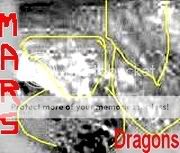 Mars Dragons saying:"Curse that ArMap! Why is
logic always on his side?"
Mars Dragons saying:"Curse that ArMap! Why is
logic always on his side?"

Another 20 page post about a rock on Mars that looks a little like a skull. Gee whiz, people.
Sure. It's a skull. Human beings lived on Mars. One of them died and now their skull is exposed, like a cattle skull on the desert. We don't know why he was on Mars, or when, or what he was doing there, or why he didn't get taken back to Earth, or why he was buried so poorly, or where the rest of his bones are, or anything else. But that doesn't matter.
Because it looks a little like a skull, so that's what it must be, and therefore NASA is a bunch of liars and even though they're evil geniuses this photo somehow slipped past their 1,000 photo retouchers and censors to reveal the truth.
Now I get to be the incredible genius who discovered proof of life (or at least death) on Mars and you can all give me a medal now. Thanks.
Sure. It's a skull. Human beings lived on Mars. One of them died and now their skull is exposed, like a cattle skull on the desert. We don't know why he was on Mars, or when, or what he was doing there, or why he didn't get taken back to Earth, or why he was buried so poorly, or where the rest of his bones are, or anything else. But that doesn't matter.
Because it looks a little like a skull, so that's what it must be, and therefore NASA is a bunch of liars and even though they're evil geniuses this photo somehow slipped past their 1,000 photo retouchers and censors to reveal the truth.
Now I get to be the incredible genius who discovered proof of life (or at least death) on Mars and you can all give me a medal now. Thanks.
reply to post by vze2xjjk
I see that my explanation was useless.
Don't you understand that overlapping the information makes a bigger data payload, and that for a fixed data rate, the more data they have less are the probabilities of sending it?
In your one hour example, suppose that each image takes 15 minutes to send, and you have six images; it would take one hour and a half to send all, but something happens and they only have one hour, so four images are transmitted, two have to wait for the next transmission.
With your system, if the six images were overlapped then not one of the images would be completely sent, they would have to wait for the next time to try it again. If the overlapping was only made with three images, the first three would be sent, the last three would be incomplete.
As you can see (or maybe not), sending the images one by one is the best way of ensuring that the biggest number of images is sent in that time frame.
And why Australia?
I see that my explanation was useless.
Don't you understand that overlapping the information makes a bigger data payload, and that for a fixed data rate, the more data they have less are the probabilities of sending it?
In your one hour example, suppose that each image takes 15 minutes to send, and you have six images; it would take one hour and a half to send all, but something happens and they only have one hour, so four images are transmitted, two have to wait for the next transmission.
With your system, if the six images were overlapped then not one of the images would be completely sent, they would have to wait for the next time to try it again. If the overlapping was only made with three images, the first three would be sent, the last three would be incomplete.
As you can see (or maybe not), sending the images one by one is the best way of ensuring that the biggest number of images is sent in that time frame.
I don't get it, some "don't get un-encoded"? Does that mean that some get encoded and some get un-encoded?
Originally posted by vze2xjjk
Just because a few at Earth ground level don't get un-encoded to separate the pics digitally and no -one notices in AUSTRALIA where the masking goes on
And why Australia?
Maybe I'm not explaining myself clearly enough.Nasa wouldn't bother to use a sytem of overlapping images unless there was some advantage to gain by
doing so.I'm not saying that every single image is an overlapping one,but that the capability is there.Look at the advantage of sending all those
tiny pics like the sundial pics if you could overlap 4,8,12,16,20,24 and transmit them in one shot because they are LAYERED. The problem comes at
the HUMAN ERROR point of receiving on the ground at Earth base in Australia where the black ops military "FUDGES with the pics" to destroy/cover up
signs of life. Separating out the individual frames could be messed up/meshed if the pics are wrongly un-encoded.You could then
have the equivalent of double exposures where two totally different CAMS were used of even the FAR-OUT mistakes I pointed out and no-one else did
(because I invented the system in theory 1987) ,of an ORBITER pic getting crossed up with a ROVER pic.It's so improbable that the young RATS in black
Nasa are not prepared for something so unlikely.So it goes un-noticed by everyone else but me,since I already know what Mars animals look like for 4.7
years. I can and have demonstrated spotting them even against heavy unscrupulous but sloppy masking by un-inspired clods working in a basement for
beer money. The same clods who missed this Dino Baby on sol 15
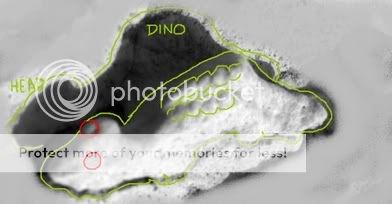 I owe them a beer so they can go back to sleeping on
the job
I owe them a beer so they can go back to sleeping on
the job

Thats amazing! some one actually pointed out even more rocks on Mars!
We need to get some top men on this right away!
We need to get some top men on this right away!
reply to post by ArMaP

Even though some images overlap,they can be turned 90 degrees,180 degrees,270 degrees. It makes the decoding easier ,I suppose when they are askew from each other by not overlapping without turning the second pic at 90 degrees either way at least.There are some 180 pics,but not so common that I've seen.But that would be advantageous for the sundial(repetitive pics). Look carefully at the JPL logo I designed and the "J " and "L" are mirror images of each other 90=J 90= L degree turns
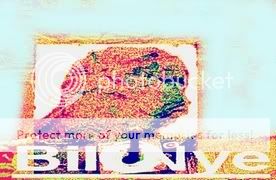


Even though some images overlap,they can be turned 90 degrees,180 degrees,270 degrees. It makes the decoding easier ,I suppose when they are askew from each other by not overlapping without turning the second pic at 90 degrees either way at least.There are some 180 pics,but not so common that I've seen.But that would be advantageous for the sundial(repetitive pics). Look carefully at the JPL logo I designed and the "J " and "L" are mirror images of each other 90=J 90= L degree turns



Anyone else have vze2xjjk on ignore so they don't have to look at all the microsoft paint animals?
reply to post by vze2xjjk
Rotating the image is irrelevant to what I have said in all my posts, the content of the image is irrelevant if it does not change the size of the data that must be transmitted.
And a mirror image is not the same as a 90º rotation.
PS: even if you designed the JPL logo (which I doubt), you do not have the right to use it without written permission from JPL, according to their Image Use Policy.
Rotating the image is irrelevant to what I have said in all my posts, the content of the image is irrelevant if it does not change the size of the data that must be transmitted.
And a mirror image is not the same as a 90º rotation.
PS: even if you designed the JPL logo (which I doubt), you do not have the right to use it without written permission from JPL, according to their Image Use Policy.
Originally posted by rocksarerocks
Anyone else have vze2xjjk on ignore so they don't have to look at all the microsoft paint animals?
That stuff gives me a headache with all the crayons and weird colors. And all for a lot of dubious simulacra? Somebody needs to download GIMP or give up completely. As it is, even if he is trying to make a point, I'm not going to wade through a lot of bad fingerpainting to get it. Too bad.
reply to post by rocksarerocks
I never use the ignore button, even in cases like this.
I always try to understand the other person, and even if I understand that they are completely wrong and just wasting my time, I do not use the "ignore" button because I do not know the future and what that person will post.
In this case, I have once starred a post from vze2xjjk (one without images), he is perfectly capable of making a good post.
I never use the ignore button, even in cases like this.
I always try to understand the other person, and even if I understand that they are completely wrong and just wasting my time, I do not use the "ignore" button because I do not know the future and what that person will post.
In this case, I have once starred a post from vze2xjjk (one without images), he is perfectly capable of making a good post.
new topics
-
A Flash of Beauty: Bigfoot Revealed ( documentary )
Cryptozoology: 2 hours ago -
Fire insurance in LA withdrawn months ago
General Conspiracies: 4 hours ago
top topics
-
Fire insurance in LA withdrawn months ago
General Conspiracies: 4 hours ago, 6 flags -
Bizarre Labour Party Tic Toc Video Becomes Even More Embarrassing
Regional Politics: 12 hours ago, 4 flags -
A Flash of Beauty: Bigfoot Revealed ( documentary )
Cryptozoology: 2 hours ago, 4 flags
active topics
-
Fire insurance in LA withdrawn months ago
General Conspiracies • 19 • : Flyingclaydisk -
Judge rules president-elect Donald Trump must be sentenced in 'hush money' trial
US Political Madness • 85 • : JadedGhost -
A Flash of Beauty: Bigfoot Revealed ( documentary )
Cryptozoology • 2 • : Flyingclaydisk -
Trump says ownership of Greenland 'is an absolute necessity'
Other Current Events • 86 • : WeMustCare -
The Truth about Migrant Crime in Britain.
Social Issues and Civil Unrest • 44 • : angelchemuel -
My personal experiences and understanding of orbs
Aliens and UFOs • 41 • : WeMustCare -
-@TH3WH17ERABB17- -Q- ---TIME TO SHOW THE WORLD--- -Part- --44--
Dissecting Disinformation • 3982 • : WeMustCare -
Los Angeles brush fires latest: 2 blazes threaten structures, prompt evacuations
Mainstream News • 298 • : Flyingclaydisk -
The Mystery Drones and Government Lies --- Master Thread
Political Conspiracies • 156 • : WeMustCare -
S.C. Jack Smith's Final Report Says Trump Leads a Major Conspiratorial Criminal Organization!.
Political Conspiracies • 48 • : WeMustCare









